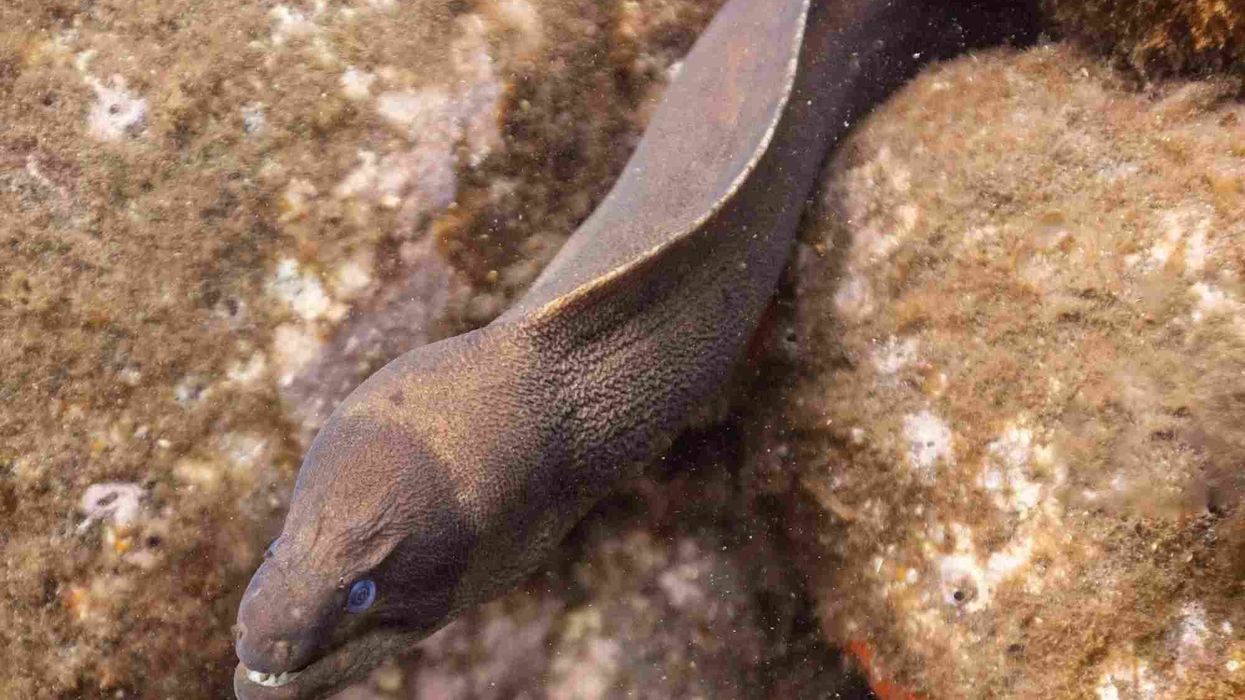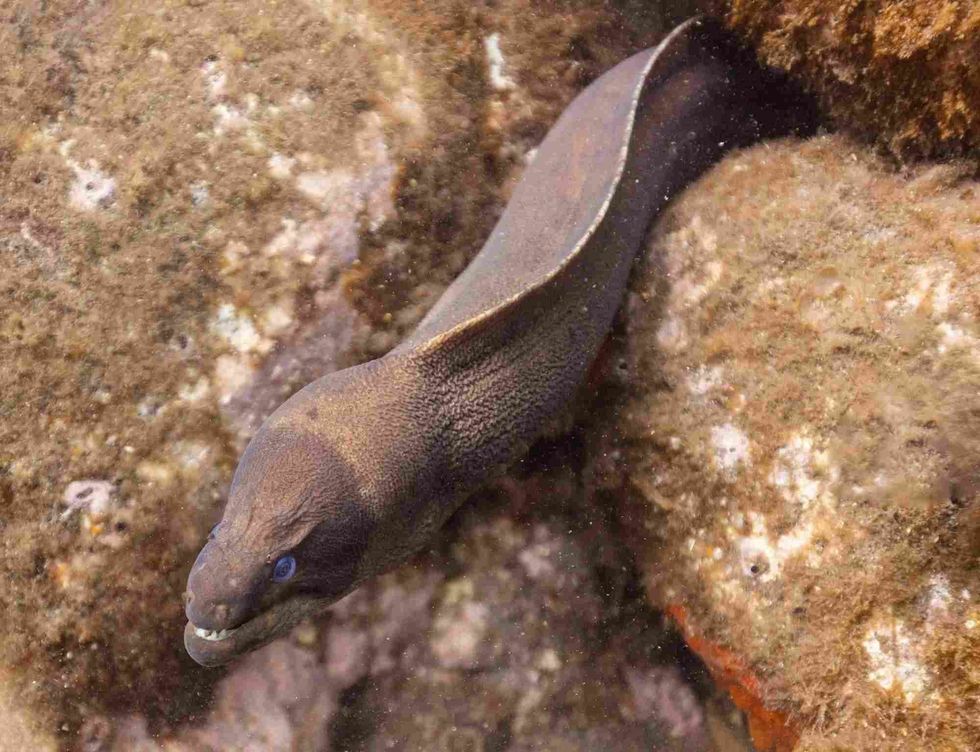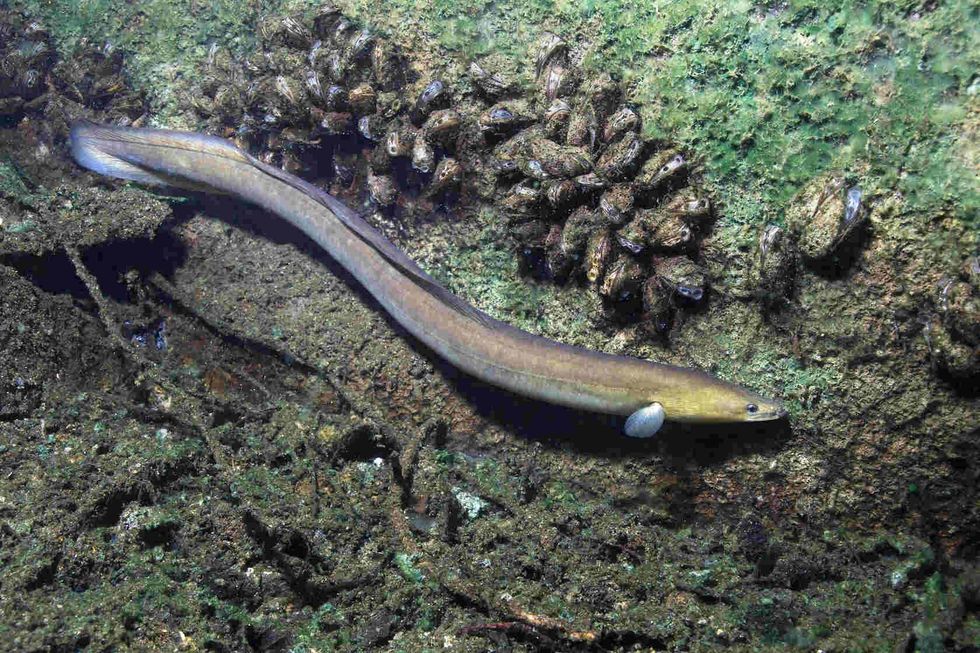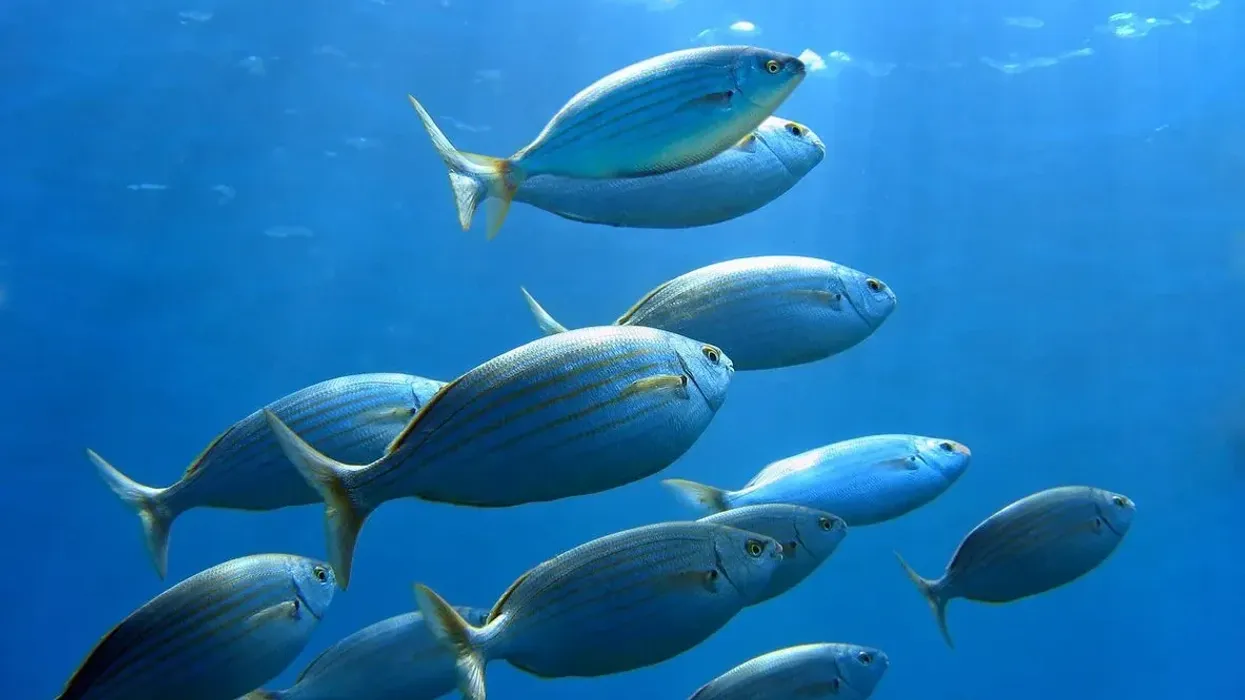The Moray Eels are a class of fish categorized in the Muraenidae family. They are commonly found in diverse habitats like tropical or temperate ocean waters. They are 16 genera and 220 species under the Moray Eels.
Their dorsal fin runs along the length of their body. The pectoral and anal fins are absent.
They have a large face and prominent eyes, making them look fierce. The mucus covering their body helps prevent any injury to their body while grazing the coral reefs. They come in different colors ranging from black, brown, green to yellow and orange.
The presence of pharyngeal jaws helps them gutting the prey down their throat. They eat small fishes on the ocean floor amongst the reefs and some crustaceans, and octopuses. Their predators include barracudas, sea snakes, sharks, and groupers. Read on to discover more.
If you are looking for more exciting content on eels, then check out our articles on eel and sea snake facts.
Moray Eel Interesting Facts
What type of animal is a Moray Eel?
The Moray Eels are a widely distributed family of eels found across all oceans. Moray Eels consist of 220 species of eels under them. These fishes are among the most extensive eels who prefer warm waters as a home base. These fish species prefer hiding in coral reefs during the day and venturing at night for gathering food.
What class of animal does a Moray Eel belong to?
They belong to the class Actinopterygii. This class consists of 99% of the fish species under it. The presence of ray fins distinguishes this class of fish. The fins are interlaced skin on bony spines.
How many Moray Eels are there in the world?
The exact population count of the Moray Eels is not evaluated due to their wide distribution across the globe. Moray Eels remain hidden under the rocks and coral reefs, making it difficult for any study to assess their presence. However, it is safe to state that they are pretty abundant globally.
Where does a Moray Eel live?
The Moray Eels are present in tropical and temperate ocean floors. They are predominantly marine and are found in saltwater more than freshwater. They prefer regions with heavy currents to calm waters.
What is a Moray Eel's habitat?
The Moray Eels need a warm environment for existence; hence they are found majorly in tropical and temperate oceans. They can survive both in deep and shallow waters alike. The tropical coral reef is where they are seen in abundance. The habitat helps them stay protected from their predators.
Who do Moray Eels live with?
Although the Moray Eels are solitary, they depict group behavior in some instances, such as for food gathering. They are shy creatures and remain hidden in the reef or between rocks.
How long does a Moray Eel live?
Moray Eels can live from 10-30 years. Some animals tend to live longer in captivity, but Moray Eels are incalculable in that aspect due to their resistance to adapt to an artificial environment.
How do they reproduce?
Reproduction happens with fertilization that happens outside the female body. The female lays 10,000 eggs and releases them into the water, which are fertilized by the sperm outside. These eggs become larvae and float in water for eight to twelve months when they mature as adults and reach the ocean floor. The mating season is from January to February.
What is their conservation status?
As per the IUCN Red List category, Moray Eels fall under the Least Concern list. Due to being ubiquitous species under these small fish predators' families and the vast distribution of their habitat, these eels have a healthy population count. They are not threatened to extinction.
Moray Eel Fun Facts
What do Moray Eels look like?
The Moray Eels have smooth skin covered in mucus, and they have a large head and eyes that look menacing. The dorsal fin runs along its entire body, and the pharyngeal jaws stand out.
How cute are they?
As these eels take up various colors to adapt to their surroundings, they may look attractive to anyone for their vibrancy and snake-like meandering movements. The gaping action for acquiring oxygen through water, if understood well, will make them look very cute too. However, some might find them scary, resembling a snake.
How do they communicate?
These solitary beings communicate with other family members via touch or by releasing chemicals into water for other eels to pick up on. It may be a signal for food gathering or a warning for predators.
How big is a Moray Eel?
They can grow as big as 13 ft, which is enormous compared to an American Eel that can only reach up to 1.6 ft. They are one of the longest eels found in the ocean bed. The gaping action of pharyngeal jaws makes them look even more impressive in size.
How fast can a Moray Eel swim?
Although there has been no study to evaluate Moray Eels' speed, we know they are swift swimmers. They make ambush attacks on their prey and gather significant momentum to pursue prey.
How much does a Moray Eel weigh?
They can weigh as much as 66 lb in mass which is very high compared to other eels like an Electric Eel that weighs only 40 lb.
What are their male and female names of the species?
There is no specific term to address the male or female Moray Eel. It is interesting to note some eels are hermaphrodites, known to change their gender at a given stage.
What would you call a baby Moray Eel?
The baby eel, in general, is called leptocephalus in its larvae stage and elver as a juvenile. The baby eels attain sexual maturity at the age of 2.5 years.
What do they eat?
As a carnivore, the Moray Eel devours other small fish species in coral reefs, crabs, octopuses, shrimps, and more. The flattened teeth in certain fish species help them break open some crustaceans' shells.
Although the exact count of teeth is unknown, the two sets of teeth along their pharyngeal jaws help them break down their food quickly. Their teeth are aligned backward to help the food or prey stay inside the mouth.
Do they bite?
Moray Eels, the ocean dwellers, are an aggressive set of eels from the fish family known to attack the divers and injure them grievously. Moray Eels' bites are unintentional and happen only when the fish species feel intimidated. Pharyngeal jaws with razor-sharp teeth make the Moray Eel jaw unique in making wounds deeper and nasty.
Would they make a good pet?
They are better left in their natural abode amongst coral reef crevices with their unpredictable temperament and wild nature. We cannot underestimate the size up to which this fish species can grow up. Hence it's better they are not domesticated and allowed to grow in their endemic territories.
Did you know...
The Moray Eels can make a knot of themselves to displace their prey from its hiding in coral reef crevices.
Chain Moray Eels can survive out of water for half an hour to hunt crabs.
The California Moray Eel has an additional set of depressible teeth to prevent the prey from escaping its mouth.
Dangers of the Moray Eel
Although these eel species are non-aggressive towards humans and do not kill them, they can accidentally harm a human by inflicting grievous injuries. The Morays have two sets of highly sharp teeth present in the jaws and the throat.
This unique morphology helps them push food inwards and assist the digestion process. They are ambush predators attacking prey when they appear in front of these Morays.
Consumption of Moray Eels can cause ciguatera poisoning, which can be fatal to humans if not treated in time.
Different types of Moray Eels
There are 16 genera and more than 200 species of Morays around the world. Here are a few prominent ones.
With the scientific name Gymnothorax javanicus, the Giant Moray Eel is the largest of all Moray Eels. The Giant Moray is almost 9.8 ft long, and these species can weigh as much as 30 kg. These Morays are known to be cooperative hunters with the Roving Coral Grouper.
Green Moray Eel facts indicate the Green Moray eels are geographically distributed in the Atlantic Ocean from New Jersey to Brazil. Rock crevices and small caves are their favorite abodes. The Yellow mucus on the Green Moray Eel skin helps protect bacteria and parasites.
Yellow mucus on brown or gray skin creates the green shade of color and hence the name, Green Moray. The scientific name for the Green Moray Eel is Gymnothorax funebris. Green Morays can grow up to 8 ft long.
Spotted Moray Eel facts stipulate that these Morays of medium length can grow 6.6 ft long. Gymnothorax moringa is their scientific name. They show diurnal activity, meaning occasionally they become active in the daytime. The spotted pattern on their body is also found in its mouth.
Zebra Moray Eel facts present the Gymnomuraena zebra, a medium-sized Moray, reaching 5 ft in length. The Zebra Moray is widely distributed in the oceans and is benthic, living near the sea bottom, unlike other Morays. In contrast to other Morays, they prey on crustaceans, sea urchins, and mollusks.
The Dragon Moray Eel, also known as Leopard Moray Eel or Enchelycore pardalis, is a smaller Moray Eel that can grow 3 ft long. They have an aggressive look due to the presence of nostril flares and horns right above the eyes.
They are found in Indo-Pacific regions and are comparatively smaller in size at 3 ft than other Morays.
Here at Kidadl, we have carefully created lots of interesting family-friendly animal facts for everyone to discover! Learn more about some other fish including sawfish, or swai fish.
You can even occupy yourself at home by drawing one on our Moray Eel coloring pages.










